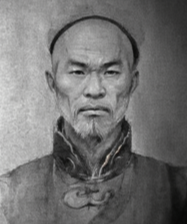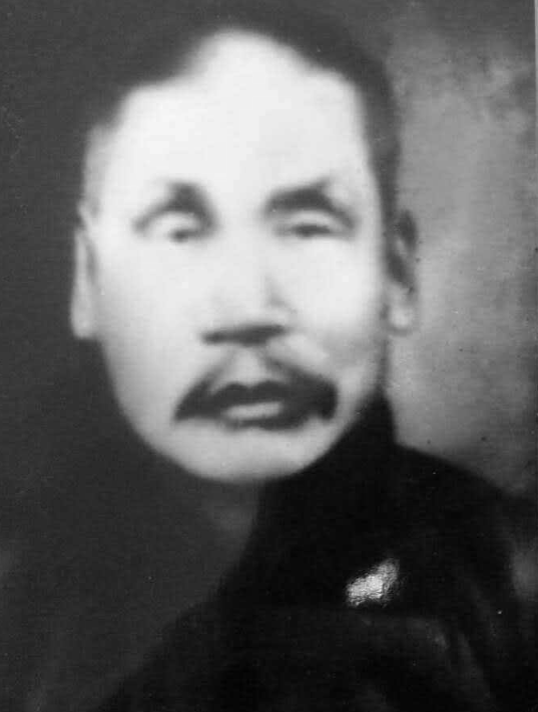The earliest records of Duanquan [Short Boxing] date back to the Ming Dynasty (1368 AD to 1644 AD)when in the classic text “Jixiao Xinshu” thought to be around 1560 AD by General Qi Jiguang, lists MianZhang’s Duanda as one of the most effective. Mianzhang is therefore often acknowledged as the founder and as a result the style is sometimes known as Mianzhangquan in addition to Mianzhang Duanda and Duanquan. In the Qing Dynasty Emperor QianLong Period(1735-1796), the art was passed on in Gao Yang County, Hebei Province and became known as Mian Zhang Quan, thereafter the styles name was simplified to Duan Quan.
Transmission to Gaoyang Village

Duanquan is a comprehensive martial art that includes weapons in addition to empty hand combat. It is one of the traditional styles practised in Gao Yang County, Bao Ding City and Cangzhou areas. The art was passed in the Qing dynasty by a Master Su Feng from Jiang Su Province. It is said that around 1750, a wanderer (Su Feng) had stopped at an inn during sunset. Whilst having dinner he observed some people practicing martial arts, without cause he approached them and asked “The boxing your practicing is it useful/effective”, the leader of the group exclaimed “of course it is, if you don’t believe it why don’t you try”. At that instant the insulted leader attacked Master Su, then without a very discreet and gentle “Zhang Peng” duanquan movement broke the attack. After continuous attacks the leader of the group failed and bowed down requesting to be accepted as a student. Master Su refused and retired to his quarters for the evening. On the next morning, early in the morning 15 students including those of the previous day were kneeling outside the inn and pleaded with Master Su to be accepted as disciples. After observing the humble nature of the village he decided to stay and impart his knowledge to villagers of Gao Yang.
In the first few days the teacher requested students to practise Zhan Dong (Standing exercise or Zhanzhuang) which is an arduous practice of holding posture for long periods of time (often hours). Only after successful completion of this requirement did Master Su Feng impart to them the Mian Zhang Duan Da skills.

For generations the art remained in the hands of a few families (mainly Zhang, Yu and Zhou) in Gao Yang counties. Just as Master Su was selective in whom he taught, the latter generations also respected this methodology. This same approach ensured only the correct inheritors were passed the skill but also ended up impacting the prolongation and popularity of the method. Master Yu Xuelang and Yu Zhangwen were famous exponents of the Yu Style of Duanquan and passed the skill to their family and disciples.
Duanquan specializes in combining the whole bodies power into a central path, in this requirement the energy required to release power is considered internal in nature, it is also characterised by its tight horse stance that is narrower than most common arts. Though named duanquan (Short Boxing), it is common that Changquan is not long and duanquan is not short.
The Style functions at all angles and distances, however due to its striking methodology maximum power is reached as short contact, for this purpose the style is also capable of entering large distances at ease by its footwork. An old couplet “San Cun Bu Jie, Qi Cun bu Da” [Three inches cannot be deflected, seven inches cannot strike] depicts the concept of Duanquan as for to ensure effectiveness of attack a strike must be within three inches of its target ideally and no further than seven. Mainly so that the power in the strike is real and sufficient to pass through rather than merely reach.
The key methods and strategies follow the simple five unique points:
- Duan (Short)
- Kuai (Fast)
- Bian (Change)
- Quan (Circle)
- Bo (Thunder)
Duan is the frame under which the style functions, short yet efficient and practical with no flowery movements. Kuai,is the speed of each technique, note that the techniques are not interlinked quickly but each movement is accelerated. It is said that as fast as a spirit. It is also said “Jiao Sui Shou Chi, Shou Sui Jiao Luo” (Leg follows, hands rise: hands follow legs drop). Bian requires fast nimble balanced changes of technique, angulation and movement. Quan, is that in each movement small circles exist and it is in this way that power can be executed. This is also a way of silk reeling power. Bo, refers to the harmony of both hard and soft. So that all power can be released as one unrelentless. “Jin Duan Li Meng” ( Power is short strength is fierce ).
The stepping and footwork is unique in Duanquan, since the stances are fairly short therefore we spend a significant time on developing the basic strength and skills required. Some of these fundamentals are noted below:
- Zhan Dang (Standing Exercises)
- Zheng Dang (Straight Stance)
- Xie Dang (Angled Stance)
Jiben Fa (基本法 Basic Methods)
Duanquan favors mastery of techniques and focuses on application to combat thus the early stages are dedicated to such practice. With over 18 key techniques forming the basis of which some are noted below:
| San Tang Chui (3 Sequential Strikes) Si Chui (Tear apart strike) Zhi Chui (straight Strike) Bao Huan Beng Da (Embracing Crushing Strike) | Bao Huan Kai Da (Embracing Opening Strike) Za Chui (Hammer Strike) Diao Shou (Diao Hands) Zong Da (Vertical Strike) | Pi Zhang (Splitting Palm) Ti Zhou (Lifted Elbow) Cun Tui (Inch Kick) Tiao Ti (Lifting Kick) |
Tangzi (趟子, Empty Hands Sets)
In Duanquan, the sets are very short and repetitive, as the intention is to introduce further techniques and methods. Thus, each new set although short includes completely new techniques compared to the previous one.
| 绵掌 Cotton Palm 随手 Following Hands 劈心掌 Splitting the Heart Palm 玉环步 Jade Ring Step | 里外发 Inside and Outside Releasing 鸳鸯掌 Yuanyang Palm 铁沙掌 Iron Sand Palm 开天辟地 Open heaven split the earth 顶心捶 Press heart strike | 八卦拳 8 Trigrams Fist 贴靠掌 Stick against Palms 粘连扒打 Adhering and Smashing Strikes 山靠掌 Mountain Leaning Palms 天地化法 Heaven Earth Changing method |
Qiexie (器械, Weapons)
The weapons techniques of Duanquan follow many of its principles – technique and body methods , as well as the relatively shortness of the sets.
| 春秋大刀 Long Handled Saber 十三大枪 Long Spear 双刀挑八卦 Double Sabers 波风刀 Saber 短棒 Short Stick | 彩虹剑 Rainbow Sword 佛尘 Religious Whisk 双匕首 Double Daggers 朴刀 Long Handled Chopping Sabre 八卦劈手棍 Short Staff 八宝连环剑 Sword | 双刀 Double Broadsword 群羊棍 Shepherd’s Staff 六合枪 6 Co-ordinations Spear 护手双钩 Double Hook Swords 劈手杆子对练 Axe Hand stick 2-man set 二郎棍对练 Er Lang Pole 2-man set |
